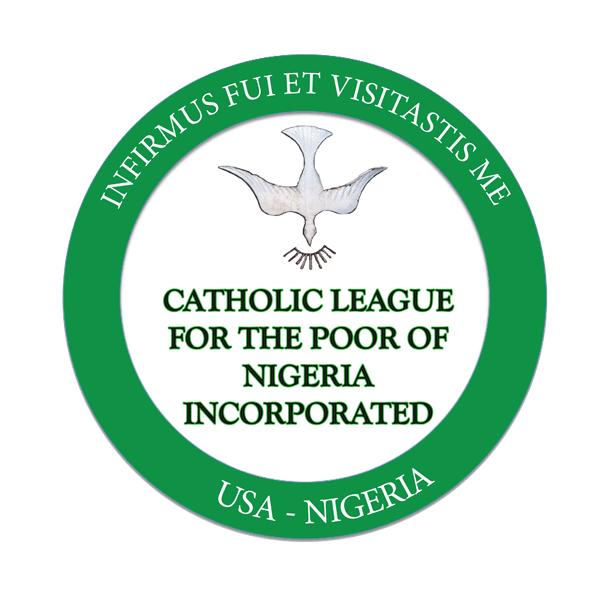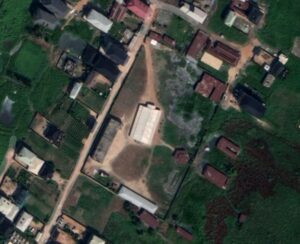Are there any hospitals within the rural communities (Okoti-Odekpe) where we plan to build the Catholic League Medical and Mental Health Hospital?
There are no hospitals in or nearby Okoti-Odekpe.
Are there hospitals in the nearby City of Onitsha, which lies about 10 km away from Okoti-Odekpe?
Having examined some statistics from the Federal Health Ministry of Nigeria (above), we can also turn to other open source information:
Specifically looking at Onitsha, the major commercial city near the rural area where we propose to build the Catholic League Medical and Mental Hospital, the casual observer finds a GOOGLE list of websites posted by some existing private hospitals within the City of Onitsha. The GOOGLE service provides a list other “hospitals” or clinics that do not have website presence. The GOOGLE search used in October, 2019 was “Onitsha hospitals.”
IMPORTANT We refer to these only as a point of reference.
Of the websites examined, one hospital states it provides two hospital wards with 25 beds each for patient care. Descriptions of medical services vary in number and kind, depending on the medical facility.
Are there healthcare problems in Nigeria that might be better addressed by physicians and nurses working with modern equipment in a new hospital, practicing internationally accepted medical practices?
The answer to this question depends on many complex, historical circumstances unique to Nigeria. The Catholic League Medical and Mental Health Hospital, with a mission of helping the rural poor with modern, Western style medical and mental health care, would become the only such hospital where medical practitioners struggling to address issues facing the poor, such as, (for example: the ever present danger of malaria, viral hemorrhagic fevers, an outbreak which affected so many Nigerians in 2018, continuing issues with inadequate HIV testing, ebola, lack of vaccination of children for measles and penta viruses. Official Nigerian government studies find that over 1/3 of Nigerian children, mostly in rural areas, continue to go without these important vaccinations. A hospital can also be the source of critical care which trauma victims which today continue to die in rural and poor areas simply for lack of access to a hospital in their community. Trauma injuries arise from gunshot, criminal violence, inter-tribal disputes (e.g., Fulani vs Igbo or Yoruba), vehicular wrecks, or even everyday household accidents. Add to this, conditions which affect humans worldwide – internal medicine diseases. A well-equipped and staffed hospital is critically needed to serve the community of Okoti-Odekpe and all rural poor in the large catchment area around Onitsha and Anambra State.
Medical literature published by Nigerian and foreign medical and academic researchers regularly report continuing problems with healthcare throughout Nigeria. One example is a recent study of the high incidence of Surgical Site Infection (SSI) in a Nigerian Teaching Hospital, with assertions that SSI complications exist elsewhere in other Nigerian surgical theaters.
“Surgical Site Infection SSI is a serious complication that limits the benefits of surgical interventions. It is a serious problem globally and particularly in Africa and other developing countries where inadequate resources and skilled personnel among others are contributing to the acquisition and spread of this infection. This study determined the prevalence of SSI and antibiotics susceptibility pattern of surgical site pathogens at a University teaching hospital in Abuja, Nigeria. Medical records of 729 and 825 patients operated and discharged in the year 2013 and 2014 respectively were examined for documentation of SSI based on Centre for Disease Control (CDC) criteria. In the year 2013 and 2014, the prevalence of SSI was found to be 15.6% and 13.58% respectively. In the two years, Staphylococcus aureus was the most prevalent pathogen causing SSI. This was followed by E. coli in 2013 and Klebsiella spp in 2014.”
Abstract of Article, Prevalence of Surgical Site Infection in a Nigerian University Teaching Hospital, Journal of Pharmaceutical and Allied Sciences 14(1) 2017: pp.v2430-2438
In 2009, Nigeria’s Health Ministry admitted healthcare problems in its National Strategic Health Development Plan Framework (2009-2015):
“Health is Wealth’ goes the popular saying and therefore in every country, the health sector is critical to social and economic development with ample evidence linking productivity to quality of health care. In Nigeria, the vision of becoming one of the leading 20 economies of the world by the year 2020 is closely tied to the development of its human capital through the health sector. However, the health indicators in Nigeria have remained below country targets and internationally set benchmarks including the MDGs, which have recorded very slow progress over the years. Currently, the health sector is characterized by lack of effective stewardship role of government, fragmented health service delivery, inadequate and inefficient financing, weak health infrastructure, mal-distribution of health work force and poor coordination amongst key players.”
In 2018, Nigeria’s Health Ministry, with assistance of UKAID, USAID and UNICEF, in a multi-year scientific study, the National Nutrition and Health Survey found continuing healthcare problems: Following internationally accepted scientific onsite investigations within all 36 Nigerian states only 64% of children (0 to 59 months) were found to be healthy; the remainder, one child in three, had medical or malnutrition conditions. In the Southeast [the situs of the planned Catholic League Medical and Mental Health Hospital] half of children (12 to 23 months) had failed to get penta or measles vaccines. Vitamin A deficiency and inadequate antenatal care (ANC) were found. HIV testing during ANC in the North continued to hover below 30%. While in the Southeast 24% pregnant women had not received HIV tests. A footnote explained that Nigerian HIV testing during ANC is an “opt-in” decision; in the United States, the test is performed without more unless the ANC patient “opts-out.”
How much does the Nigerian Federal Government spend for health care of its population within the homeland? And what about the availability and quality of medical care throughout all areas of the most populous nation of Africa?
A recent CIA Factbook reported the following: Nigeria provides 3.7 per cent of GDP (Gross Domestic Product) for healthcare overall. Compare: United States spends 17.10 of GDP; UK 9.10; Cuba 11.10, etc. United Nations, World Health Organization, and international medical agencies regularly warn of healthcare deficiencies affecting health, economic, and mental condition in Nigeria.
Some Foreign Embassies provide their observations of local conditions regarding healthcare in Nigeria on their web pages. The Irish Embassy has the following “Health” warning:
“In most parts of Nigeria, medical facilities are very basic and even in major population centres the level of available medical care is quite limited, and payment must usually be made up-front. Accordingly, medical evacuation to Europe or South Africa is frequently required for anything more than a minor accident or illness.”
The American Embassy provides the following comments for those who visit the US Department of State web pages:
Organization and Capability
The best health care in Nigeria is available in private and nonprofit medical facilities. However, even these facilities typically fail to meet U.S. standards. The quality of government medical facilities is unacceptable by U.S. standards; however, the government is committed to resuscitating its health care through systematic funding and revitalization.
Medical Personnel
The quality of health care providers ranges from poor to fair. Most physicians and nurses do not meet U.S. standards of training. Recent graduates lack experience with modern equipment and sophisticated procedures.
Medical Material
Nigeria imports the majority of its pharmaceutical and medical supply needs, primarily from European sources. Medical shortages have hindered medical practice, research, and training.
Blood Supply
The blood supply is not safe. Blood-banking services are unacceptable by U.S. standards.
Social Factors
Little opposition exists to Western medical practices; however, many people in the country continue to consult traditional healers because of the absence of adequate Western medicine. In Muslim-controlled areas, there is some resistance to women being treated by male physicians.

